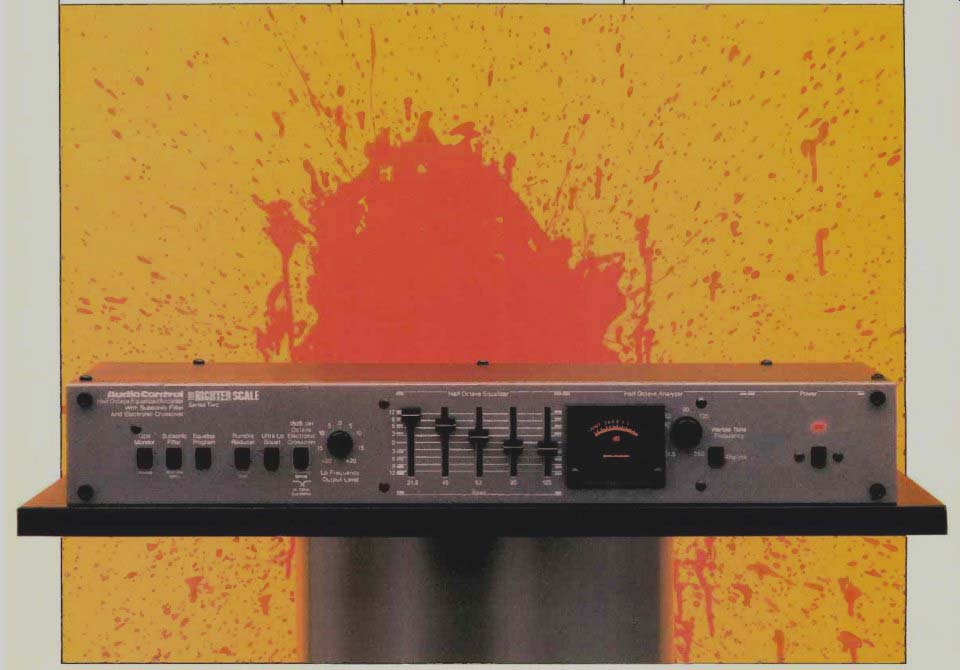
Manufacturer's Specifications
Frequency Response: 3 Hz to 100 kHz.
Distortion: 0.008%.
Input Impedance: 100 kilohms.
Output Impedance: 150 ohms.
Subsonic Filter: 18 dB/octave be low 20 Hz.
Low-Frequency Summer: 12 dB/ octave below 200 Hz.
Electronic Crossover: 18 dB/octave. 100 or 800 Hz.
Warble-Tone Output: 100 mV.
Signal to Noise: 108 dB.
Dimensions: 17 in. (432 mm) W x 2 1/2 in. (64 mm) H x 6 in. (152 mm) D.
Weight: 4 1/2 lbs. (1.9 kg).
Price: $249.00.
Company Address: 6520 212th S.W., Lynnwood, Wash. 98036.
With the name Richter Scale, Audio Control's bass equalizer and crossover immediately gives the impression that it can be used for earthquake-type sound. An examination of the front panel provides the clues on how the user might be able to "play Mother Nature." First, there is a five-section, half-octave equalizer with filter centers at 31.5, 45, 63, 90 and 125 Hz. Each slider has a range from -12 to + 12 dB.
A pushbutton switch allows inserting a 15 dB boost at 34 Hz, in addition to any boost introduced by the half-octave equalizer.
The unit also has facilities for controlling unwanted low-frequency energy. Switching in the subsonic filter activates a roll-off at 18 dB/octave below 20 Hz, more effective than many filters with shallower slopes. Audio Control's exclusive "Rumble Reducer" also needs but the push of a button: A crossfeed between channels cancels out-of-phase signals below 200 Hz. In the low-frequency region, most of the music in the two channels of a stereo record is in phase (lateral movement of the stylus on a disc). Most rumble, however, is out of phase (vertical stylus movement), and the Richter Scale's rumble-reducer circuit cancels this energy out. The summing decreases at 12 dB/octave as the frequency goes up, and has no effect above 200 Hz. Thus, normal stereo imaging is maintained in the important mid and upper frequencies.
To help you adjust the half-octave equalizer correctly, the Richter Scale includes a half-octave analyzer (with extra-damped, VU-type meter), a warble-tone generator, and a plug-in condenser microphone. A push of the "Analyze" button turns on the meter lights, and then the supplied test microphone is placed in the normal listening position. A rotary pot sets the warble tone's center frequency anywhere from 250 Hz (for level reference) to 31.5 Hz, the lowest equalizer-filter frequency. The warble-tone outputs are fed into the stereo system through any high-level input (such as "AUX"). The procedure for using this handy system will be given later.
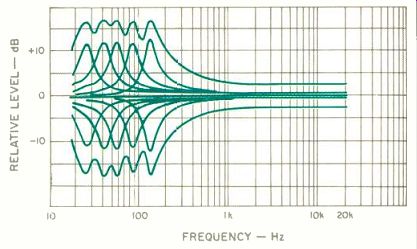
Fig. 1--Swept-frequency responses of each filter section at maximum boost
and maximum cut, and with all sections at maximum boost and maximum cut.
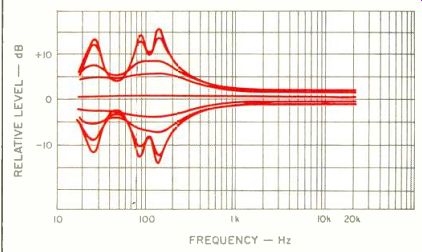
Fig. 2--Swept-frequency responses with 31.5-, 90- and 125-Hz filters set
successively for steps of 3 dB from-12 to +12 dB.
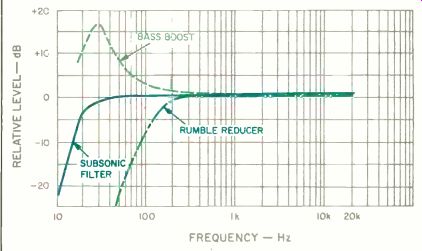
Fig. 3--Responses of the switch-selectable 15 dB boost at 34 Hz, the subsonic
filter, and the rumble reducer with out-of-phase signals.
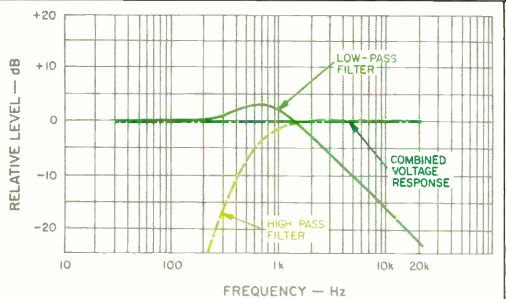
Fig. 4-Responses of the and their combined low- and high-pass filters, voltage
response.

Fig. 5--Spectrum-analyzer sweep of 45- and 250-Hz warble tones (see text).
Analyzer bandwidth, 30 Hz; sweep rate, 50 Hz/S; sensitivity, 10 dB/div. vertical
and 50 Hz/div. horizontal.
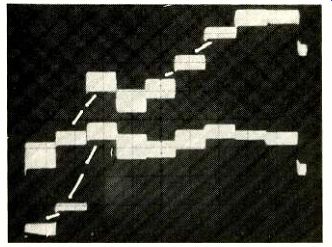
Fig. 6--One-third octave response of stage-monitor loudspeaker before (top
curve) and after (bottom curve) equalization. Vertical sensitivity, 5 dB/div.;
horizontal, 1/3 octave from 25 to 250 Hz.
Another feature is the built-in, two-way stereo crossover, with either 100- or 800-Hz crossover frequency, switch selectable. The 100-Hz crossover frequency would be the choice for a subwoofer, and 800 Hz would be good when adding an external crossover to a three-way system. This would permit biamping for reduced distortion, driving mid range and tweeter in each channel with one amplifier and using a more powerful amp for the two woofers. Audio Control notes that the 800-Hz crossover frequency could be changed if needed, increasing the attractiveness of this feature. The crossover design is the derived type, resulting in flat output in the crossover region with either voltage or pressure-wave addition (with the correct positioning of drivers), as opposed to flat total energy response. A center detent control provides a range of ±20 dB of gain adjustment on the low-frequency output. This greatly facilitates matching the two sets of amplifiers and loudspeakers.
The usual switches for EQ in/out, tape recorder monitor in/ out, and power are provided. The white panel designations are easily read against the gray background in all but glaring light, and the positions of the small, black push-buttons are fairly easy to discern.
Along the back panel are in/out stereo pairs for interconnection with a preamp/receiver and a tape recorder. There are also stereo outputs for both low and high frequencies from the electronic crossover. The monophonic warble tone is fed through left and right outputs. The microphone input is also a phono jack.
Removing the top cover revealed that nearly all circuitry is on one chassis-size p.c. board. All jacks and switches are soldered directly into this board. The sliders are mounted on a small, vertical board, on which the soldering was very good. However, I could not see the soldering on the main card without further disassembly, which was not attempted.
The DIP ICs (mostly 4136 quad op-amps) were soldered in place. Rack adaptors are available for those who would prefer rack mounting, but the manufacturer notes that the unit is not designed for professional use. [Editor's Note: The model shown is the Richter Scale II; we tested the original model, which Audio Control says is identical except for its case and the addition of an on/off switch.] Measurements With all special functions switched out and the five sliders in their center detents, responses were checked both with and without the EQ circuits switched in. With EQ, the response was flat within 0.7 dB from 20 Hz to 20 kHz. Without EQ, the deviations over the same range were within 0.3 dB.
The 3 dB down points were at 3.3 Hz and 118 kHz with EQ and at 2.0 Hz and 113 kHz without EQ. Swept-frequency plots (Fig. 1) were made of individual filter responses and of response with all sliders in maximum positions. The measured center frequencies were within 3% of those specified (31.5, 45, 63, 90 and 125 Hz) except for the highest one, which was at 136 Hz ( + 8.8%), just fair in accuracy. The maximum boosts and cuts were all within 1.0 dB of the nominal ± 12 dB. With an individual filter at a maximum, there was an across-the-band level increase of about 0.7 dB, and this increase grew as other filters were added, up to almost 3 dB with ail filters at maximum. The last condition would be quite unlikely, and the major effect of any such shifts would be a need to readjust reference level for the equalization process.
Figure 2 presents the responses with the 31.5-, 90-, and 125-Hz filters set successively at the slider scale markings from-12 to + 12 dB. There is a greater shift in "out-of-filter" levels than is desirable, but there is rough correspondence between the actual boosts and cuts and the settings. Many equalizers are much poorer in this regard. Tests with the 63-Hz filter showed that a boost of 5.7 dB ( + 7 scale) produced a "Q" of 1.0 (a practical limit to avoid ringing).
Figures 3 and 4 plot the responses of the other Richter Scale functions. The ultra-low boost was close to 16 dB at 34 Hz, but the net effect was less because there was an across-the-band level increase of 0.5 dB. The subsonic filter showed its 18 dB/octave roll-off between 3 dB down at 20 Hz and over 20 dB down at 10 Hz. The rumble reducer was checked by feeding matching-level, but opposite-phase, signals to the stereo inputs. The plot shows the 12 dB/ octave reduction in level below 200 Hz. In-phase signals are not affected in this fashion.
The low-frequency output of the crossover, when set at 800 Hz, had a boost of close to 3 dB around 700 Hz, and a roll-off above 1 kHz of 6 dB/octave. The high-frequency output, on the other hand, had an 18 dB/octave slope below 800 Hz. The voltage addition of these two outputs generated the flat response trace that is the reference line for all of the curves in Fig. 4. This is the expected result with this derived-type crossover design. A tone-burst test at the crossover frequency was passed easily, showing that phase relation ships were correct. In actual use, pressure waves from correctly aligned drivers would add similarly.
It was possible to get as much as 26.8 dB boost at 31 Hz using both the 31.5-Hz slider and the switch-selected extra boost. Adding the subsonic filter (recommended with the extra boost) reduced the boost to 26.4 dB, still a consider able amount. With this combination, the response was at +8.3 dB at 20 Hz. Control of sub-sonics remained, however, with response down 17 dB at 10 Hz and down about 29 dB at 7 Hz. The low-frequency output level of the crossover could be controlled from-19.9 to + 20.0 dB.
With the equalizer sliders in detent, the EQ in/out level changes were 0.5 dB or less. The maximum input/output levels were at least 6.8 V from 20 Hz to 20 kHz open-circuit, dropping very slightly to 6.7 V with a 10-kilohm load. The input impedance was very close to 100 kilohms for most of the audio band, dropping to 25 kilohms at 20 kHz, plenty high enough. The output impedance was a low 320 ohms at the lowest frequencies, and it was even lower-close to 165 ohms-for most of the band.
The distortion at 2 V was very low: 0.0038% or less from 20 Hz up, rising at the highest frequencies to 0.017% at 20 kHz. At this same level, slew-rate limiting did not appear until 95 kHz (1.9-V output), so the unit had a good slew factor. The signal-to-noise ratio was at least 94 dBA relative to a 0.5-V reference. With various combinations of slider and switch positions, more noise appeared, so a figure of 89 dBA (re: 0.5 V) was judged to be more likely in normal use and an excellent figure it is, slightly better than the spec, since Audio Control rates it relative to 6 V maximum output.
The warble-tone output was 115 mV on the average, with about 2 dB higher output at the lower frequencies compared to the reference 250-Hz level. Figure 5 shows spectrum analyzer sweeps made with the warble tone set at 45 and then 250 Hz. The vertical spread in the display is the result of the warble tone moving in and out of the analyzer bandwidth. The warble-tone level seen by the Richter Scale microphone and half-octave analyzer is indicated by the upper envelopes of the waveforms. The microphone was 0.32 inch in diameter, and it could not be calibrated acoustically because of its non-standard diameter. I did not feel this was much of a deficiency, and a couple of simple tests obtained the figure of 81.5 dB SPL for the required level at 250 Hz for a zero meter indication. This is in a good range for such tests-above normal background noise and below unnerving levels.
Use and Listening Tests
The owner's manual is more complete than most with such signal-processing equipment. Quite a bit of detail is included on the unit's many functions. The text has a humorous approach, which should not confuse most users, nor should a couple of errors along the way.
The controls were all easy to use and completely reliable, with the exception of the coupling for the low-frequency level pot, which slipped more, and more with time. (Once set in normal use, it would not need adjustment.) A custom stage-monitor loudspeaker was chosen for the task of improving the low-end response. The supplied microphone was placed in the normal listening position, the warble tone was set to 250 Hz, and the system output level was increased to get a zero indication on the analyzer meter. The tone was successively tuned downward to each of the equalizer frequencies, moving the slider in each case to take out half of the deviation three runs, there appeared to be no basis for further adjustment. Figure 6 shows the before (top) and after (bottom) responses of the loudspeaker. It was not possible to bring up the 250-Hz band (shown partly at right of figure) relative to the others; there appeared to be a drop in the speaker's output for some reason. Do note, however, the great improvement in flatness from 200 Hz down to 31.5 Hz.
The improvement in sound was very obvious, especially with such material as "Also Sprach Zarathustra" by Strauss.
The boost of 15 dB at 34 Hz was added at times, and I liked the change with some of the discs. I also appreciated the subsonic filter and the rumble reducer results.
The Audio Control Richter Scale is a very flexible and versatile unit for improving bass reproduction. Its general performance is excellent, and its many features (including the two-way crossover), coupled with an attractive price, should make it of interest to audiophiles and semi-professionals alike.
----------
The analyzer section features highly damped level meter and warble-tone generator whose frequency is adjustable.
-Howard A. Roberson
[adapted from AUDIO magazine/Aug. 1983]
Also see:
dbx 10/20 Computerized Equalizer/Analyzer (Jan. 1985)